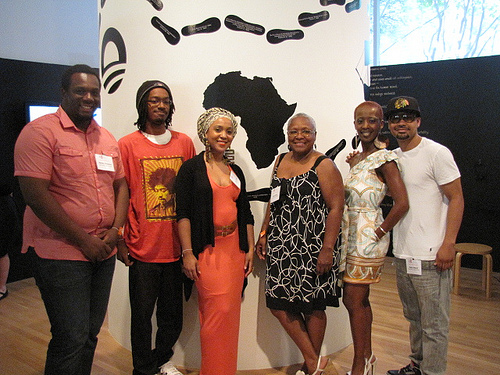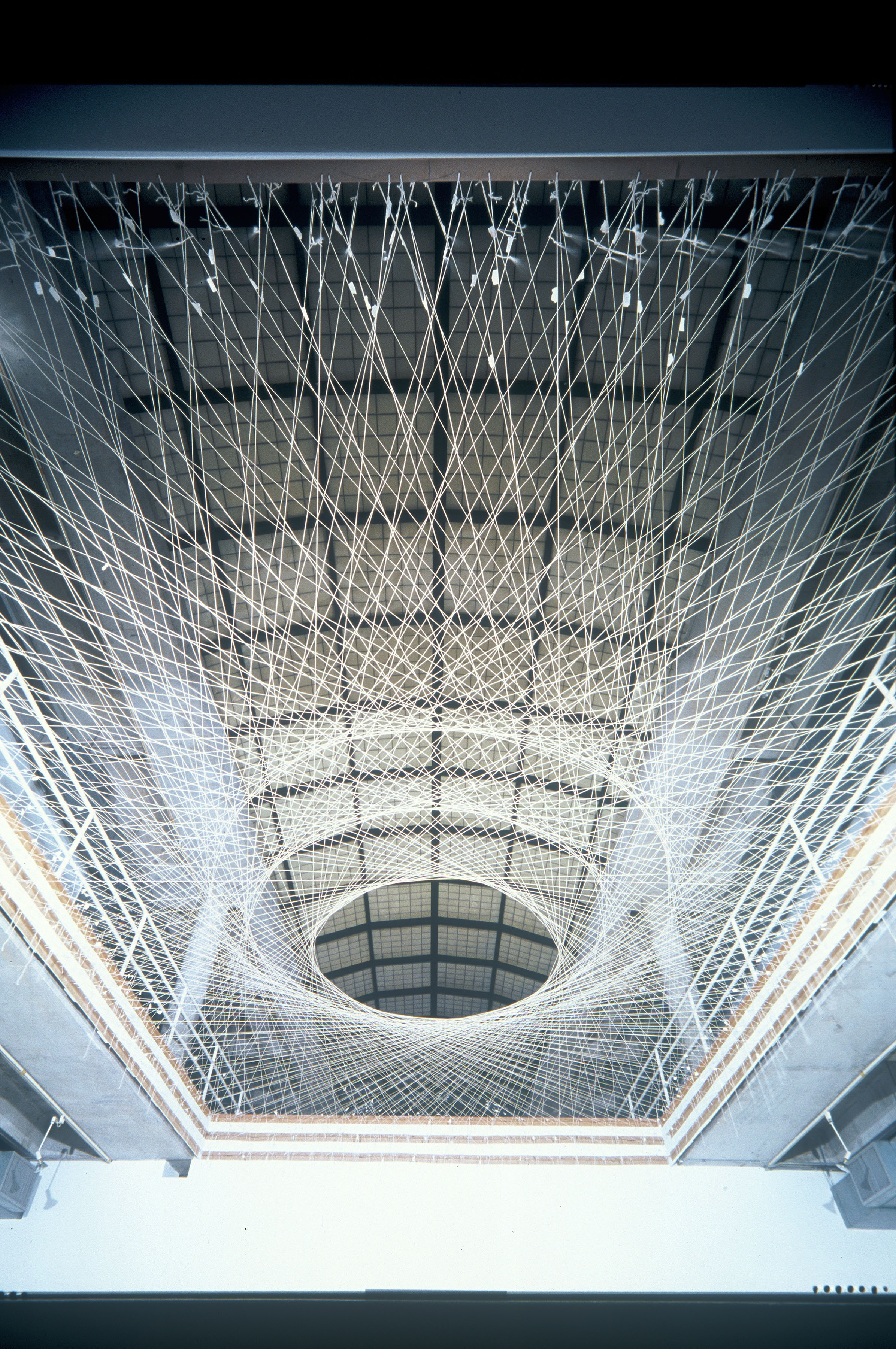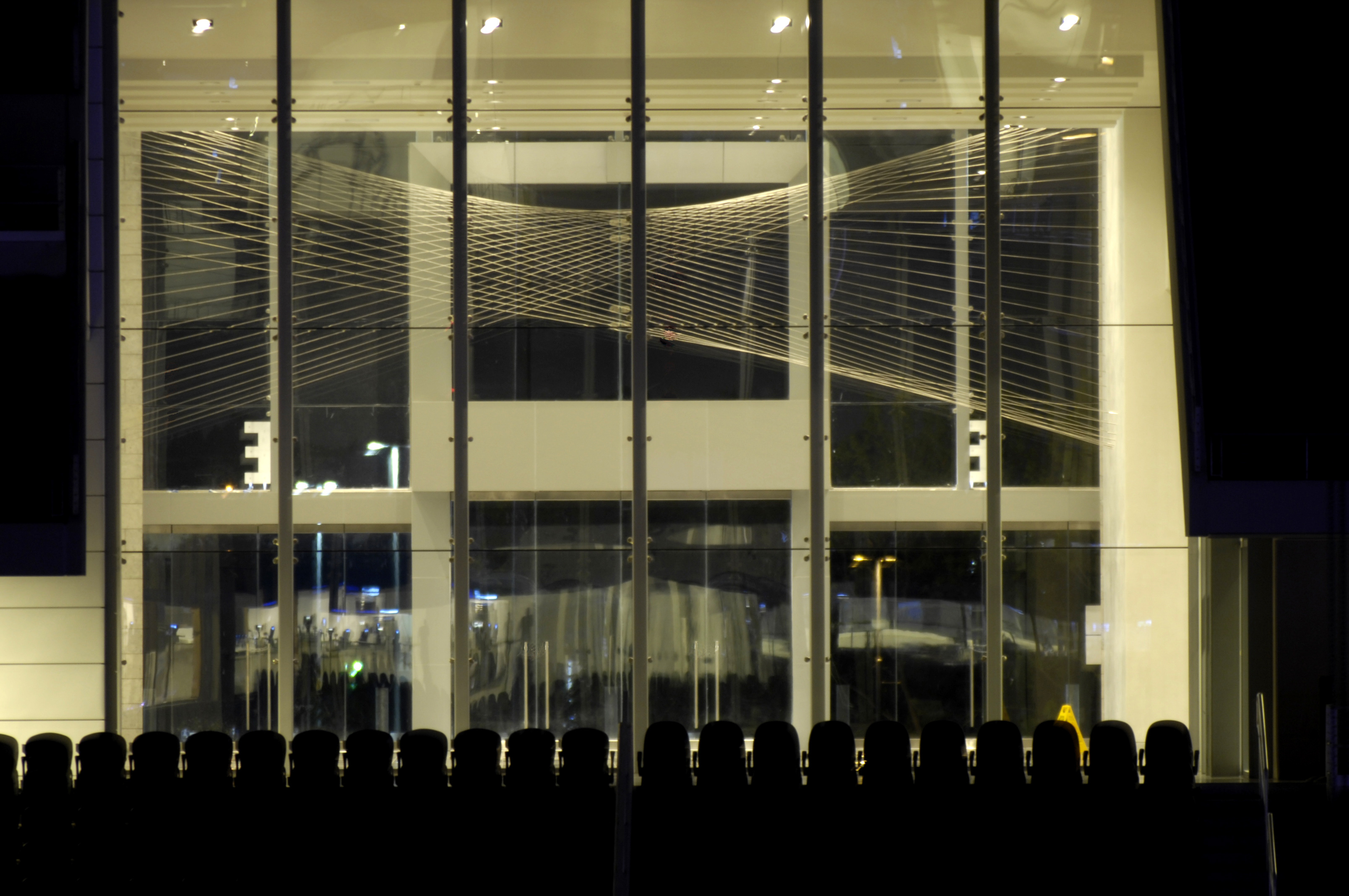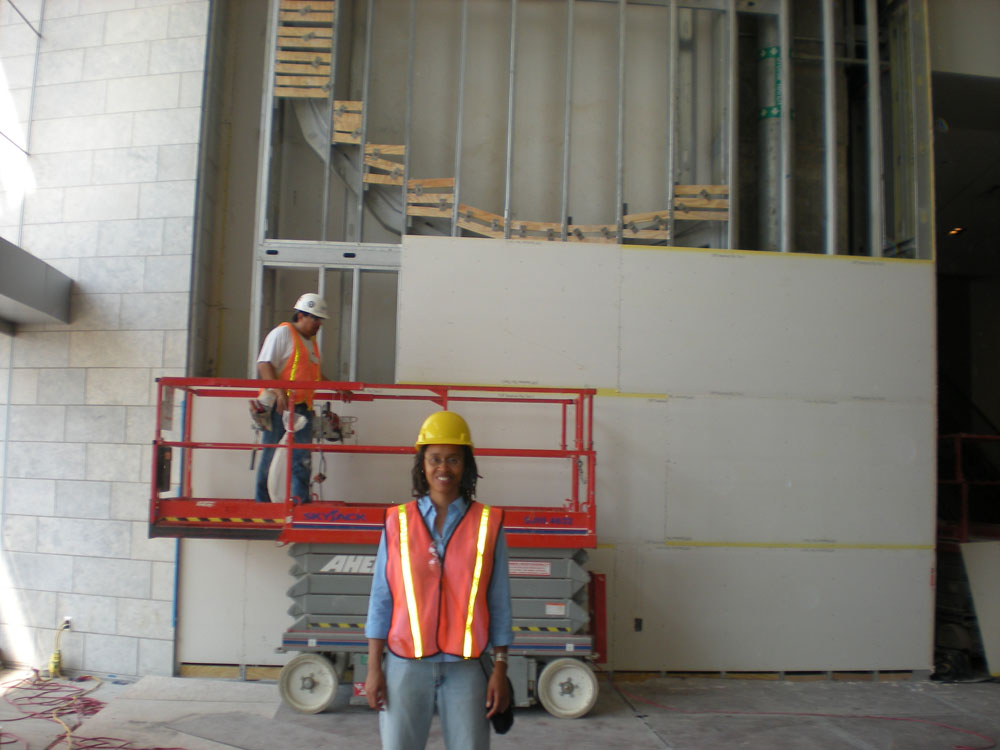The current Community Partner Response Installation in the Center for Creative Connections invites visitors to contemplate space in relation to the African American experience. Titled Free Association and designed by artists associated with the South Dallas Cultural Center, the installation provides a variety of experiences that include sound, poetry, media, and movement while exploring the notion of limitations of space.

South Dallas Cultural Artists. From left: Harold Steward, Patrick Washington, Ava Wilson, Vicki Meek, Michelle Gibson, Malik Dillard.
Collaborators on this project and their areas of expertise include Malik Dillard, media; Michelle Gibson, dance; Vicki Meek, visual; Harold Steward, theater; Patrick Washington, media; and Ava Wilson, poetry. Read their perspectives on the installation below, along with their free association responses to the words community, creativity, and art.
Vicki – What was your vision for this project? Free Association was created around the concept of limited space and how such limitations can either contain you or spur you to stretch beyond them. The general idea was to explore the history of African Americans within the context of this concept, paying close attention to how African Americans have used creativity to transcend societal constrictions. The more specific idea was to explore the performing, visual, literary & media arts as means of expressing the transcendence of limitations.
Inspired by the installation title Free Association, what is the FIRST word or phrase that comes to mind when you read the following terms?
Community = Essential
Creativity = Boundless
Art = Life
Harold – How did you integrate theater with the other components of the installation?
More than theater, I was working with some of the components of performance studies. In particular, I wanted to look at the ways in which people naturally operate in “open space” and how that differs when space is confined. One of the many attributes of people of African descent is that we have historically found ways to work within the confines forced upon us when we are taken outside of the continent of Africa, and held on to some cultural traditions while creating new ones in very limited physical and sociological spaces. The guiding question I had was, “What cultural practices and survival techniques did descendants of Africa keep or create once they arrived on the American shore, and where do they intersect?” The workshop that I offered in conjunction with the installation used Theater of the Oppressed games to cause the participants to be conscience of things that they feel, hear, and see, and the effect these things have on the individual or groups of people when they go unrecognized.
Community = Web- to destroy the community you destroy the web, to build a community you build the web
Creativity = Kuumba –The Kwanzaa principles that demands that we leave our community better than we found it
Art = Knowing what beauty to keep and what issues to call out
Ava – How did you connect poetry to the ideas of free association and space?
The written word is very powerful. Through the use of several literary devices – metaphor, allusion, symbolism, etc. – tethered specifically by imagery, I wanted to allow the reader to visualize what enslavement may have been like. I wanted to create a “free association”, if you will, for the reader. As for space, I wanted the taut nature of the language and the use of references to shape and dimension to show the vastness of the universe and in the African world in contrast to the narrowness that was the dungeons, slave ships, and realities that the African faced in the west.
Community = Family
Creativity = Spirituality
Art = Life
Patrick – How did you use media to enhance the installation?
We used digital photography, streaming video feed, and an electronic music production program to enhance our installation.
Community = UNITY
Creativity = ART
Art = LIFE
Malik – How did the use of media enhance the installation? I feel that the media side of the installation creates interaction and gives a great visual for dance instruction.
Community = People coming together
Creativity = Music/Art
Art = Dance/Spoken Word/ Music
Explore Free Association and your own creative responses in the Center for Creative Connections through October 12.
Melissa Nelson
Manager of Teaching in the Community


